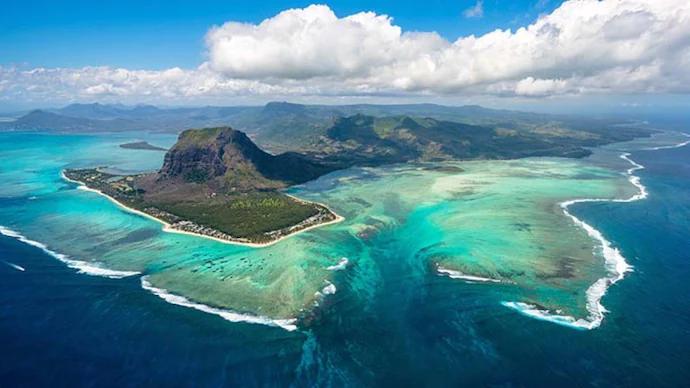Africa-Press – Mauritius. Rediscovered in the 16th century (though Arab and Malay sailors are known to have visited the island as early as the 10th century) by the Portuguese, Mauritius was uninhabited until 1598 when first the Dutch, then French and finally the British colonised the tiny island before it became independent in 1968.
Even though the British rule lasted a relatively longer period, the French roots are more evident in the Mauritian lifestyle and people still prefer to speak Creole and French over the official English language.
Right from the time when you set foot at the SSR International Airport at Plaisance, chances are that if you say you are from India, the locals, who proudly refer to the island as ‘Little India’—a moniker attributed to former Prime Minister Indira Gandhi, will give you a warmer welcome.
Not surprising since over 68 per cent of Mauritians are of Indian origin whose forefathers migrated to Mauritius as indentured labourers during the British rule.
Though India is seventh among top 10 nations in the Mauritius tourism pie, it contributes only a fraction to the market dominated by Europe till now. However, the Mauritian Tourism minister Nando Bodha plans to change that.
He recently announced plans to attract over 100,000 Indian tourists within the next five years, more than doubling the number from the existing 49,779 (as per February 25, 2011 data).
Says the minister, “Being initially frequented by honeymooners only, today we have different segment of travellers from India visiting the island. ” “Both Mauritius and India have a long standing historical and cultural connect.
It offers the Indian travellers a perfect feel of home away from home while taking an international vacation with family, friends or spouse,” adds Bodha.
Deputy director of the Mauritius Tourism Promotion Authority (MTPA) Vijaye Haulder agrees. “We speak Hindi, our culture and food habits are similar, what’s not to like,” he says. This ‘rainbow’ nation offers a blend of cultures, Indian, African, Chinese, French and British.
And there’s plenty to do, from various sporting activities to visiting leisure parks, undersea walks, submarine rides to watching hundreds of dolphins accompanying your catamaran, lazing on beaches or long drives on the ‘tea route’ lined by tea estates are just a few of the excellent options.
For a sublime experience visit the Belle Mare beach before the first light to view the perfect sunrise and head to Flic en Flac at dusk for the most surreal sunset you are likely to see, ever.
At Vieux Grand Port, the oldest settlement in southeast Mauritius, you can see the ruins of the first Dutch fortifications. Or visit a former sugar factory at Beau Plan’s Aventure du Sucre. The museum here tells the story of sugar, the original economy booster once upon a time, and along the way covers the history of Mauritius.
Have you heard of the Talipot Palm which flowers once in 60 years and withers thereafter? If you are lucky you might just see one in full bloom at the SSR Botanical Garden in Pamplemousses which also houses 500 different species of plants.
With rising spending power, the Indian tourist, who tends to spend over `16,000 per person per day, is increasingly being wooed by the island which relies on tourism as one of its prime sources of income.
“Mauritius is an extremely popular mid-haul destination especially among the honeymoon travellers,” agrees Amal Rakeshi, Thomas Cook’s associate vice president Leisure Travel Outbound.
For More News And Analysis About Mauritius Follow Africa-Press







